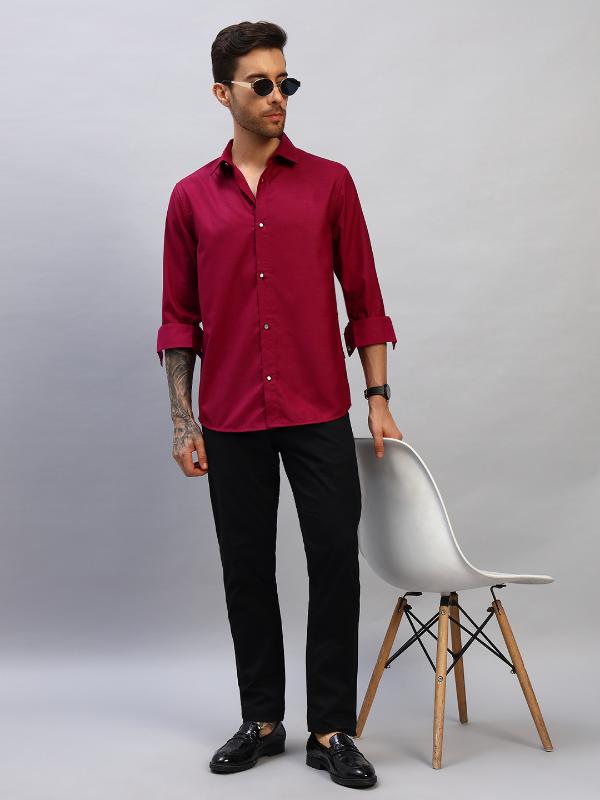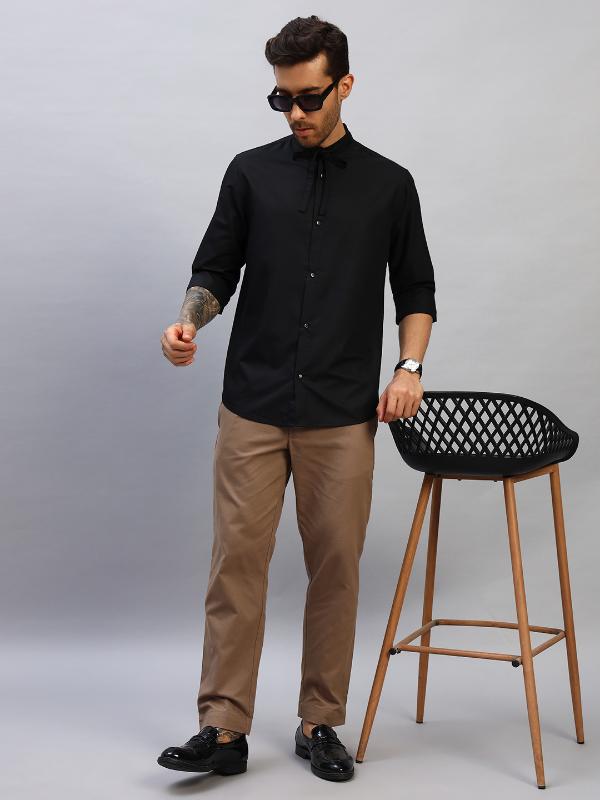The Shirt in Focus
The featured image showcases a stylish man wearing a dark blue linen shirt paired with light-colored trousers. The shirt appears to be made of a breathable linen fabric, evident from its slightly textured look and casual drape. It features a classic button-down design with a visible placket and what seems to be a small, possibly embroidered, detail on the chest. The color, a deep navy or indigo, offers versatility, easily transitioning from casual to slightly more polished settings.
Enduring Appeal of Plain Shirts
Linen shirts like this one epitomize a timeless fashion choice, and their appeal extends globally, including style-conscious France. The natural, lightweight nature of linen makes it a comfortable option, particularly in warmer climates or for a relaxed yet refined look. Plain shirts, especially in classic fabrics like linen and versatile colors like this deep blue, are indeed a constant in the fashion landscape. They serve as wardrobe staples that can be effortlessly incorporated into various outfits. In France, known for its understated elegance, such shirts align perfectly with a chic and effortless style.
Versatility for Any Occasion
These shirts are highly adaptable. For an office setting, they can be paired with tailored trousers or chinos and a blazer for a smart-casual appearance. Depending on the workplace culture, a linen shirt offers a breathable alternative to more formal cotton shirts. Beyond the office, a plain linen shirt is suitable for a multitude of occasions. Dressed down with jeans or shorts, it provides a relaxed weekend vibe.
Adapting to Your Mood
The versatility extends to different moods as well. The simplicity of a well-fitting, plain shirt allows the wearer to express their personal style through accessories and accompanying pieces, adapting to whether one aims for a sophisticated, casual, or smart look. The enduring popularity of plain shirts, even in a fashion-forward country like France, underscores their inherent style and adaptability for any occasion or mood.











Leave A Comment